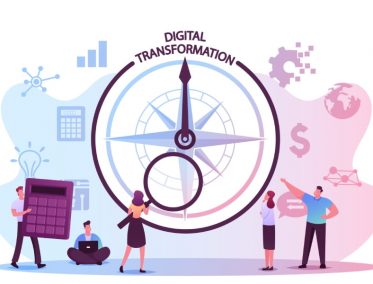How critical is Change Management in digital transformation? With companies racing to implement new technologies in order to be more competitive, user adoption continues to be a challenge, especially in the digital era. This blog will cover how to define a solid Change Management strategy that ensures the success of your digital transformation efforts.
The Importance of Change Management in Digital Transformation
In the digital era, change happens at an extremely accelerated pace. With new the current market mantra to “digitize or die”, companies are rushing to stay up to date adopting new technologies to add a competitive edge to their operations. However, despite all companies’ efforts to embrace the digital transformation, more often than not, these efforts fall short of their goals.
This can be explained partly due to a poor or a lack of a Change Management strategy. As defined by TechTarget, Change Management is a systematic approach to dealing with the transition or transformation of an organization’s goals, processes or technologies. The purpose of Change Management is to adopt strategies for effecting change, controlling change, and helping people to adapt to change. Such strategies include having a structured procedure for requesting a change, as well as mechanisms for responding to requests and following them up.”
According to McKinsey & Company, 70% of Change Management efforts fail due to employee resistance and lack of management support. Adding up to this, there’s also the fact that conventional Change Management strategies may not be the best fit for this digital era. On one hand, changes introduced by the digital transformation are different from changes that happened in past years. With a combination of high levels of scalability, interdependence, and dynamism, digital transformation involves fundamental changes in multiple aspects of the organization as a whole.
On the other hand, the dynamic of today’s workplaces requires taking a different approach to traditional, linear Change Management, to achieve adoption success.
Failing to adopt a different approach could mean a big negative impact on the company as it implies big losses in time, resources, and overall money. The wrong strategy, or no strategy, can contribute to increasing employee’s frustration and consequently their resistance. The more frustration and resistance the less are the goodwill of users to adopt new technology. That attitude can delay a whole project when we look to the End User adoption. If they don’t understand the change and buy the whole idea, don’t expect them to have goodwill to learn the system, perform tests, and give feedback. This is one of the big reasons that after implementations are done it’s still easy still to find glitches and errors in functionalities.
Orchestrating Transformation

As mentioned in the book “Orchestrating Transformation”, traditional Change Management fails to drive digital transformation, because of its fragmented and outdated treatment of change itself.
Processes and systems within a company are all interconnected, if you make a change in one of the parts, at least another part will be impacted somehow. A siloed approach doesn’t take into consideration the impact of the changes in one area to another, it doesn’t create the dynamic required to make fundamental changes in the organization. It instead creates small disconnected parts that don’t generate additional value. This disconnection has been unintentionally promoted by managers taking the “pilot approach” when implementing new things. By starting off with pilots, project managers have a narrow scope of things, don’t see changes in a holistic way, and don’t coordinate with other pilot projects.
According to James Macaulay, co-author of the book, managers need to orchestrate all the parts or “bits” as he refers to them, in order to drive digital transformation. By orchestrating these parts companies generate the necessary synergy to enable connections among all the resources, mobilize them, and address all the transformation challenges.

Following the Orchestra metaphor, the authors suggest the need for an “Orchestrator”, a leader that will bring all the instruments together. Another way to think about the Orchestrator, the authors suggest, is as a Chief Transformation Officer (CTO). The CTO should build rapport with other key leaders; to be seen as a source of innovation, agility, and speed. He should work with them, particularly with the CIO to increase the digital business agility in the company.
Change Management Challenges in Digital Transformation
Traditionally, there have always been challenges when introducing changes in an organization, but as we mentioned previously, change in the digital era introduces a whole new level of complexity. Below you can find some Change Management challenges in the digital era, that you most likely will encounter in your digital transformation initiatives:
- Being agile. Agility to adopt new technologies is a must in today’s fast-paced digital era if you want to remain competitive. Change Management needs to accelerate the adoption of innovation by prioritizing adaptability and responsiveness.
- Bridging the generational gap between digital natives and older generations. Even though every generation is different from each other, the gap between those who grew up with the internet and mobile, and older generations are broader than ever before. The way they communicate, interact, and think is different. This demands different types of learning and communication in order to accommodate both generations.
- Keeping staff relevant. One of the main aspects that have come with innovation in the digital era, is automation. While automation helps to make companies being more efficient, this could make some employees’ tasks redundant, possibly driving them out of work eventually. Change management needs to address this by putting an extra focus on training and re-skilling.
- Maintaining your digital edge. Remaining competitive in the digital era is not only about introducing constantly new technologies. It is required to continue investing in training, innovative and creative thinking, and learning and developing new skills.
Defining Effective Change Management in Digital Transformation
While the essence of Change Management remains valid, the accelerated pace and purpose of change has added complexity to technology initiatives in the digital era. In order to be successful in their digital transformation journeys, companies need to include a lot of transparency about the projects, involvement of leaders at all levels, proactive training for impacted employees and support, post-implementation support, periodical user assessment.
The goal is no longer to get through the next initiative, but rather to develop a culture and dynamic to embrace change with agility and confidence that ensures achieving the full potential of today’s technology.
The idea of Change Management is to anticipate issues, mitigate errors, deal with resistance, measure impact and coordinate the adoption in a way that the transition is smooth to all users, but at the same time effective in a way that functionalities are correctly in place avoiding negative impact in the daily routine and financial losses.
To learn more about how IT Convergence can help your organization manage change effectively in the digital era, contact us here.



